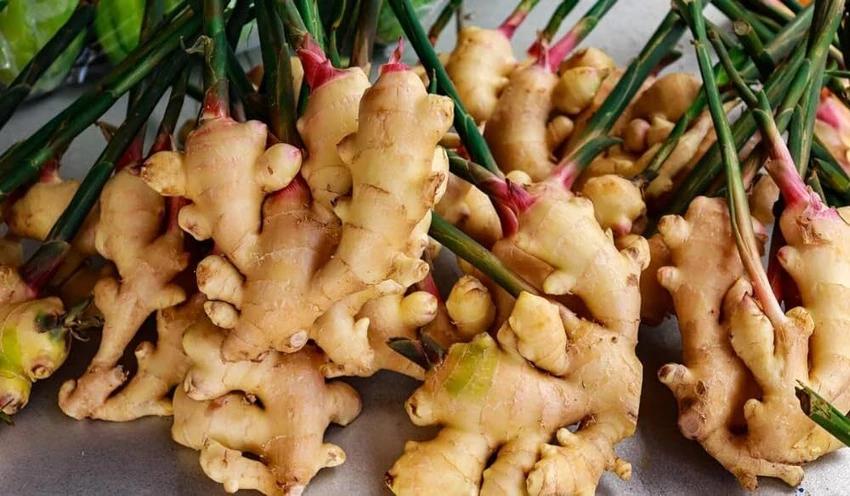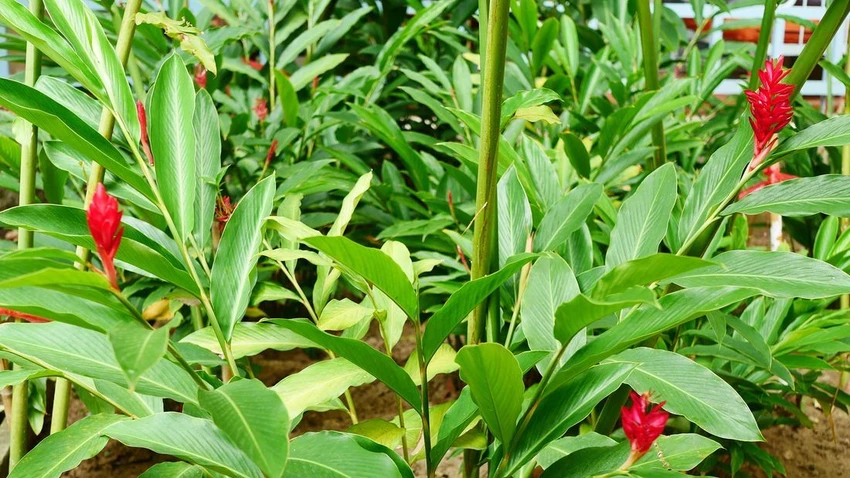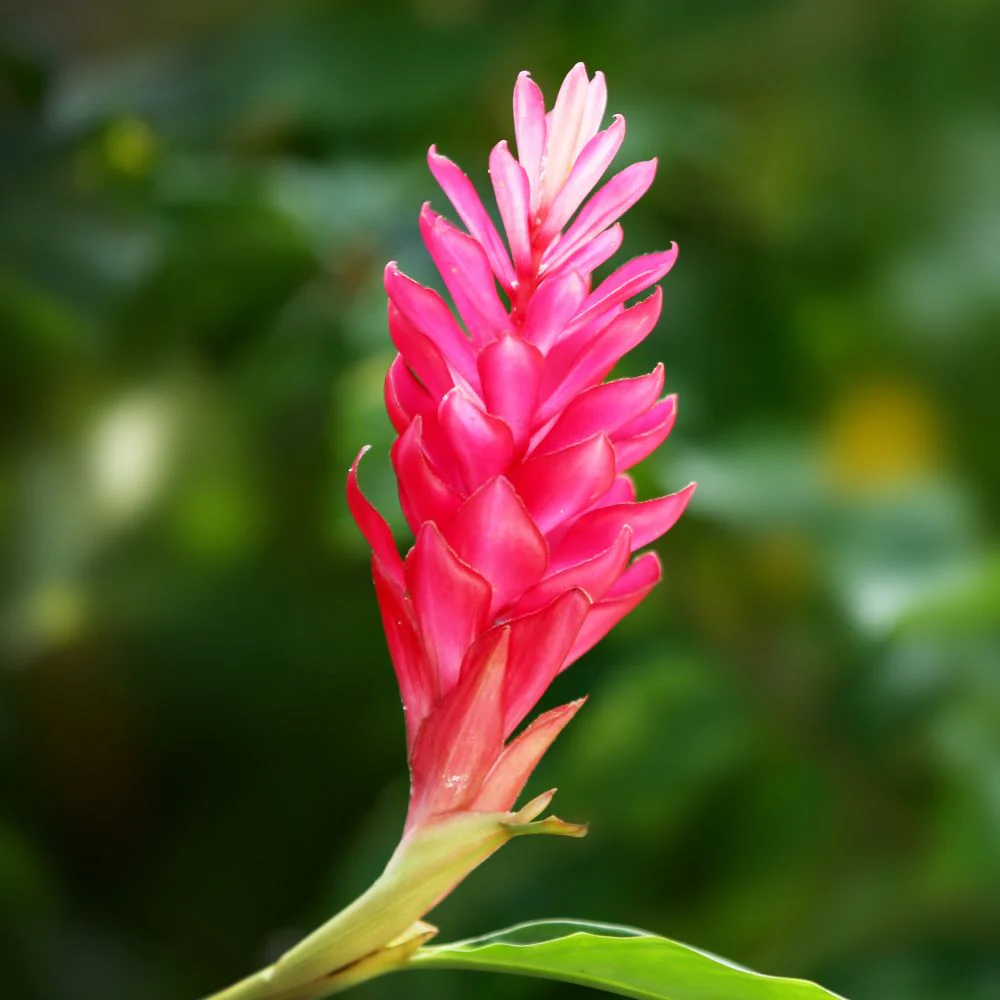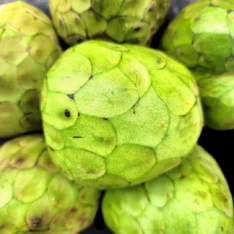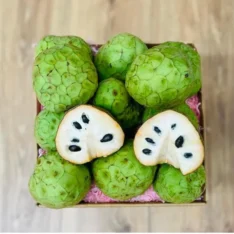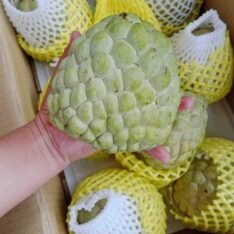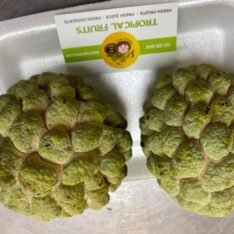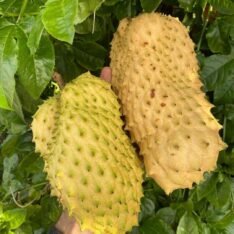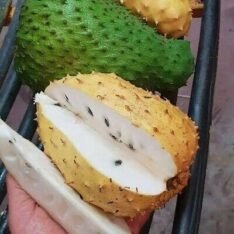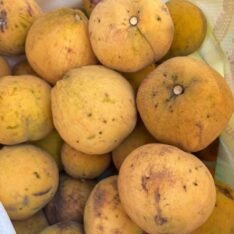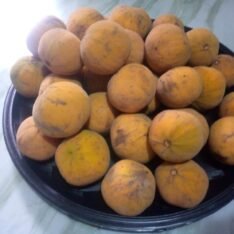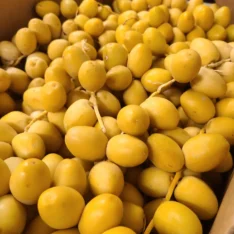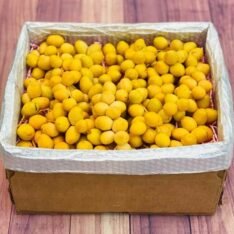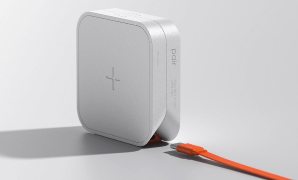Buy Ginger Seeds Pack (Zingiberaceae) USA | Tropical Fruits Delivery
Price range: $5.00 through $80.00
- Propagation from rhizomes is the more common and reliable method for culinary ginger.
- Growing ginger from seed requires specific conditions: consistent warmth (75-85°F), high humidity, and patience (germination can take months).
- Ginger has a rich ancient history, originating in Southeast Asia and spreading globally as a valued spice and medicine.
From Spice Rack to Seed Packet: Cultivating Your Own Ginger with a Ginger Seeds Pack (Zingiberaceae)
When you think of Ginger Seeds Pack, you probably picture those gnarled, fragrant rhizomes (underground stems) that add a fiery kick to your stir-fries, soothe a sore throat, or liven up your favorite baked goods.
But have you ever considered growing this incredible spice yourself, right here in the USA? While most people propagate ginger from a piece of its rhizome, an interesting alternative for the adventurous gardener is starting from a Ginger Seeds Pack (Zingiberaceae)!
Embarking on the journey of growing ginger from seed offers a unique horticultural challenge and a deep connection to this beloved plant. Let’s delve into the world of ginger seeds and what it takes to cultivate your own spicy treasures.
What are Ginger Seeds (Zingiberaceae)? The Unseen Start
The ginger you typically buy in the grocery store is a rhizome, not a true root. It’s a vegetative part of the plant, meaning it’s a clone of the parent plant. While this is the most common and reliable method for growing ginger, the plant does produce flowers and, subsequently, seeds.
These seeds belong to the Zingiberaceae family, which is a large and diverse group of flowering plants that includes many well-known spices like turmeric, cardamom, and galangal, all sharing similar growth habits and often tropical origins.
True ginger seeds are small, typically dark, and can be challenging to find and even more challenging to germinate. This is because commercial ginger varieties are often sterile or produce very few viable seeds due to centuries of cultivation focused on rhizome production.
When you find a Ginger Seeds, you’re often looking at seeds from less domesticated, wilder ginger varieties, or sometimes, they might be mislabeled or refer to other plants in the Zingiberaceae family that are easier to grow from seed, but whose rhizomes might not be the culinary ginger you’re expecting. It’s crucial to purchase from reputable sources that clearly specify the species of ginger seed.
How to Cultivate Ginger Seeds: A Patient Gardener’s Guide
Growing ginger from a Ginger Seeds Pack requires patience, specific conditions, and a good understanding of the plant’s needs. This is definitely not for the faint of heart or the impatient gardener, as germination rates can be low, and seedlings are delicate.
Here’s a general guide on How to Cultivate Ginger Seeds:
-
Preparation is Key:
-
Seed Viability: Ginger seeds often have a low germination rate and a short viability period. Purchase fresh seeds from a reputable supplier.
-
Soaking: Before planting, soak your ginger seeds in warm water for 12-24 hours. This can help soften the seed coat and encourage germination. You can also lightly scarify the seeds by gently rubbing them with fine sandpaper, but be very careful not to damage the embryo.
-
-
Planting Medium: Use a well-draining, rich potting mix. A blend of compost, perlite, and coconut coir works well to provide both nutrients and good drainage.
-
Planting: Plant the seeds shallowly, about 1/4 to 1/2 inch deep, and lightly cover them with soil.
-
Environmental Conditions:
-
Warmth: Ginger seeds require consistent warmth to germinate, ideally soil temperatures between 75°F and 85°F (24°C-29°C). A heat mat is highly recommended, especially in cooler climates.
-
Humidity: High humidity is crucial. Cover your seed tray or pots with a clear plastic dome or plastic wrap to create a mini-greenhouse effect.
-
Light: While germinating, indirect light is best. Once seedlings emerge, provide bright, indirect light.
-
-
Watering: Keep the soil consistently moist but never waterlogged. Mist regularly to maintain humidity.
-
Patience is a Virtue: Germination can be slow and erratic, ranging from a few weeks to several months. Don’t give up too soon!
-
Transplanting: Once seedlings have developed a few sets of true leaves and are sturdy enough, carefully transplant them into larger pots or directly into your garden if conditions are suitable.
Ginger Seeds Health Benefits: Indirectly Good for You!
While the Ginger Seeds themselves aren’t consumed for direct health benefits (their primary use is for propagation), the plant they produce – culinary ginger – is a powerhouse of wellness. Thus, the health benefits are indirect, stemming from the eventual harvest of the rhizome.
Here are the well-known Ginger Health Benefits of the rhizome you hope to grow:
-
Nausea Relief: Perhaps ginger’s most famous benefit is its effectiveness against various forms of nausea, including morning sickness, motion sickness, and chemotherapy-induced nausea.
-
Digestive Aid: Ginger stimulates digestion, helps with bloating, and can relieve indigestion by speeding up stomach emptying.
-
Pain Reduction: Due to its anti-inflammatory properties, ginger can help alleviate muscle pain, menstrual cramps, and even symptoms of osteoarthritis.
-
Immune Support: Its antioxidant and anti-inflammatory compounds contribute to a stronger immune system.
-
Antioxidant Power: Ginger is rich in antioxidants that help protect the body from oxidative stress and free radical damage.
-
Lowering Blood Sugar: Some studies suggest ginger may help lower blood sugar levels and improve heart disease risk factors in people with type 2 diabetes.
Ginger (Zingiber officinale) Origin and History: A Global Spice Journey
The Ginger Origin and History is a rich and ancient one. The culinary ginger plant (Zingiber officinale) is native to the rainforests of Southeast Asia, likely originating in parts of maritime Southeast Asia, such as India or China. Its use as a spice and medicine dates back thousands of years.
-
Ancient Roots: Ginger was one of the first spices to be exported from Asia, traded as far back as ancient Roman times. It was highly valued by ancient Indian, Chinese, and Middle Eastern civilizations for both its culinary and medicinal properties.
-
Global Spread: Arab traders brought ginger to the Mediterranean region, and by the 13th century, it was well-known in Europe. Spanish conquistadors later introduced ginger to the Caribbean and other tropical regions of the Americas, where it found ideal growing conditions and became a significant crop.
-
Cultivation for Rhizomes: Over centuries, cultivation focused on propagating the rhizomes, as this was the most efficient way to reproduce the desired culinary characteristics. This consistent vegetative propagation led to many of the common ginger varieties we know today being less reliant on or capable of producing viable seeds.
Today, ginger is cultivated globally in tropical and subtropical regions, with India, China, Nepal, Indonesia, and Thailand being major producers. Its long and storied history underscores its enduring appeal and significant role in cultures and cuisines worldwide.
Where to Buy Ginger Seeds Pack USA? Sourcing Your Spicy Start
Finding a reliable Ginger Seeds Pack (Zingiberaceae) in the USA can be a bit more challenging than finding ginger rhizomes, precisely because most commercial ginger is grown vegetatively. However, for the dedicated gardener, there are options if you’re keen on the seed-starting adventure.
If you’re wondering, “Where to Buy Ginger Seeds Pack Near Me?” here are your best bets:
-
Exotic Plant Nurseries: Some online nurseries that focus on tropical plants might offer ginger seeds. They often have a deeper understanding of the specific requirements for growing these plants.
-
Etsy & eBay (with caution): You might find listings for Ginger Seeds Pack on platforms like Etsy or eBay. However, exercise extreme caution here. Verify the seller’s reputation, read reviews carefully, and be aware that mislabeled or non-viable seeds are common in this space. Look for sellers with clear descriptions and good feedback regarding germination.
-
Botanical Gardens or Plant Societies: While not direct sellers, botanical gardens specializing in tropical plants or local plant societies might offer seed exchanges or be able to direct you to reputable sources for ginger or other Zingiberaceae seeds.
Types of Ginger and Related Zingiberaceae for Cultivation
While true culinary ginger seeds are rare, the broader Zingiberaceae family offers many fascinating plants for cultivation, some of which are easier to grow from seed or rhizome, and offer different uses.
Here’s a comparison to clarify what you might find when exploring Ginger Seeds Pack (Zingiberaceae):
Understanding these distinctions is vital, as a “Ginger Seeds Pack” might refer to any of these family members. If your goal is culinary ginger, confirm the Zingiber officinale species, but be prepared for a more challenging seed-starting process compared to simply planting a piece of grocery store ginger.
A Spicy Journey from Seed to Spice!
While challenging, the journey of cultivating ginger from a Ginger Seeds Pack (Zingiberaceae) offers a unique and rewarding experience for the dedicated gardener. It connects you directly to the life cycle of this ancient and revered spice, from its humble beginnings as a tiny seed to the potent rhizome we cherish in our kitchens.
Whether you’re exploring the nuances of How to Cultivate Ginger Seeds for a personal challenge, or simply deepening your understanding of Ginger Origin and History, this venture is a testament to the diverse world of plants.
And even if your seed-grown rhizome takes its sweet time, the knowledge that you nurtured that fiery flavor from scratch will be a reward in itself. So, if you’re ready for a botanical adventure, consider adding a Ginger Seeds Pack to your gardening wishlist and start your very own spicy saga!
Additional Information
| QUANTITY | 1 Pound, 5 Pounds Box, 10 Pounds Box, 25 Pounds Box |
|---|


